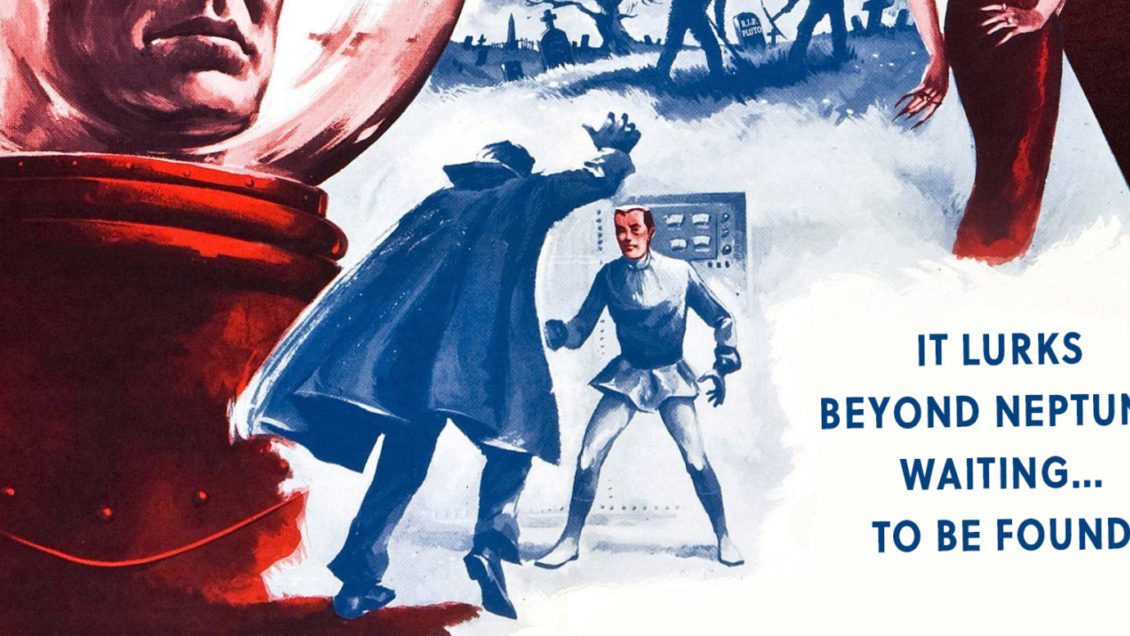CLEMSON, South Carolina — August 24, 2006, was a day of infamy for those who grew up having learned that a far-out icy body in the solar system – Pluto – was the ninth and final planet in our solar system. It was on this day that the International Astronomical Union (IAU) voted to demote Pluto from “planet” to “dwarf planet,” and the scientist who incited that change is coming to Clemson to speak about it.

Mike Brown, the Rosenberg Professor of Planetary Astronomy at the California Institute of Technology, will be visiting Clemson University on Feb. 21 as part of the TIGERS ADVANCE Distinguished Speaker Series. Brown’s lecture, “Planet 9 from Outer Space,” will chronicle how his team’s discoveries led to the demotion of Pluto and the search for a new Planet 9.
Brown’s research specializes in the study of bodies at the edge of the solar system and it’s this line of inquiry that called into question, 14 years ago, how Pluto should be classified.
“Until 1992, we didn’t know that there were any other objects out there with Pluto. We thought Pluto was just this solitary object, even though it didn’t quite fit with the rest of the planets,” Brown said. “By 2000, we had discovered a couple hundred other objects in this Kuiper Belt region and Pluto happened to be the largest object known at the time. It was then I realized that the only reason Pluto was considered ‘the largest’ was because no one had done a systematic survey looking for larger objects.”
Thus, Brown’s team took on the challenge and began probing the most distant parts of our solar system for never-before-seen, larger bodies. Each year brought the discovery of new objects, such as Quaoar, Orcus and Sedna, until the 2005 announcement of Eris, the most massive object found in the solar system in 150 years.
“At that point, people were primed to make the argument – is Eris a planet? Is it not a planet? There were arguments in every direction until finally that now infamous meeting in Prague when the IAU voted to demote Pluto – and demote my poor object that I found, too,” Brown said.
The demotion came as a result of the IAU defining, for the first time in history, what exactly defines a planet. Prior to that 2006 meeting, astronomers had been working off the 18th century definition for a “planet” – a definition that couldn’t accurately categorize the variety of objects that have been discovered in recent decades. Brown likens the reclassification to the discovery of the Asteroid Belt in the early 19th century.

“The first 15 or so asteroids that were discovered, they called them all planets because they didn’t really know what else to call them at the time. Finally, they said, ‘You know, these things are so small – they’re so different from the other eight planets that we should categorize them as something else.’ That’s why they’re now this ring of materials called the Asteroid Belt,” Brown said. “It really is exactly the same thing with Pluto. It’s that Pluto is part of this ring of material out beyond Neptune in the same way that there’s an asteroid belt between Mars and Jupiter.”
Since then, Brown hasn’t stopped searching for other unbeknownst objects at the edge of the solar system. In fact, his team announced in 2016 that they believe there is a new Planet 9 out there – one that is about 10 times more massive than Earth.
“I am more certain today that it’s there than I was three years ago when we first made this announcement,” Brown said.
Brown’s Feb. 21 lecture will describe his team’s latest evidence for the existence of Planet 9 and how the demotion of Pluto helped make way for such a study.
The lecture will be in the Watt Family Innovation Center Auditorium on the campus of Clemson University at 7:30 p.m., with overflow seating available at a live broadcast in Brackett Hall 100. This event is free and the public is encouraged to attend. (See parking information below.)
Brown will also hold an astronomy colloquium at 4 p.m. on Feb. 21 in the Watt Family Innovation Center Auditorium as the invited speaker for the College of Science‘s annual Discover Science lecture. This 4 p.m. event is intended for faculty, staff and students at Clemson University. Contact Máté Ádámkovics (adamkom@clemson.edu) for more information.
Parking information
Visitors can park for free in employee (green) spaces along Calhoun and Parkway Drives or pay for designated (white) metered spaces near the event. Employee (green) spaces labeled “24-hour” are not available for this event and will be ticketed. Handicap spaces are available upon request by contacting Parking and Transportation Services at parking@clemson.edu or 864-656-2270.
Get in touch and we will connect you with the author or another expert.
Or email us at news@clemson.edu

